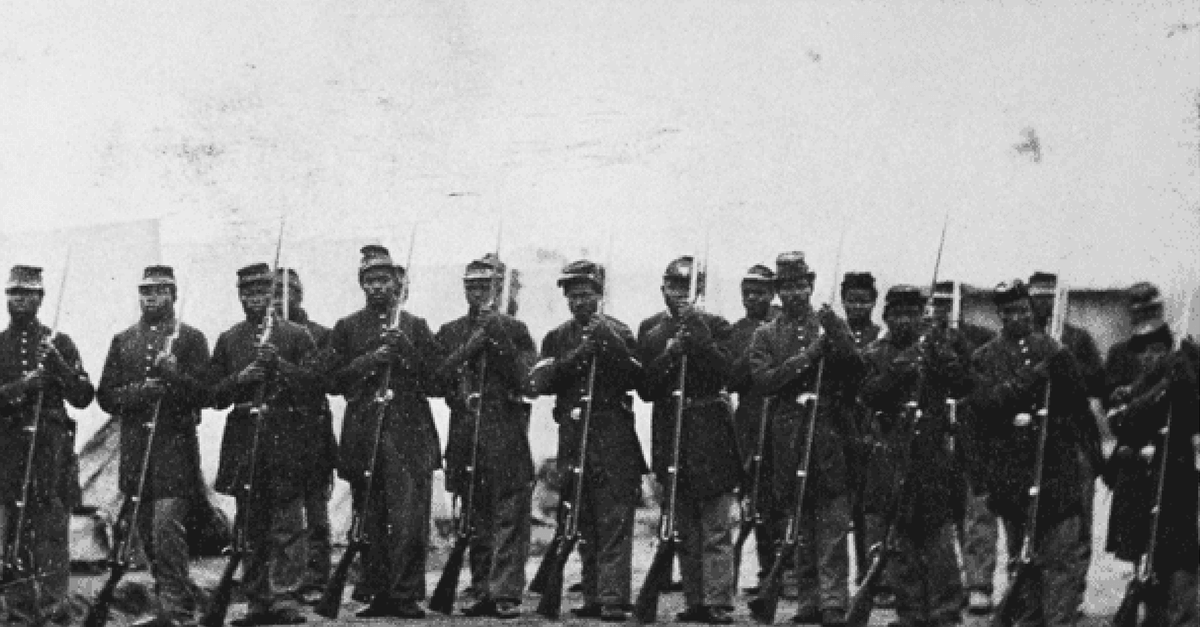Throughout American history African Americans and most people of color, including Native Americans, were traditionally discriminated against and given little opportunities in the military. Taken in the context of the periods, black soldiers could have the freedom to serve in armed forces compared to opportunities in civil life. They still, however, encountered many social barriers.
For example, free blacks could and did join with both sides during the Revolutionary war in segregated units and mixed units. Slaves could also win their freedom through fighting. Despite their service, there were misgivings about arming masses of blacks for fear of an armed revolution.
Black units could serve with as much distinction and honor as humanly possible, but still could be viewed as threats and second class citizens or worse. Even during the Civil War, blacks fought on the battlefield and politically for both sides. Obviously, the views of the Union were much more appealing to blacks, but black men in the south could still find wealth and success.
It is hard to believe a black regiment fought for the South, but that is exactly what the 1st Louisiana Native Guard (LNG) was. It is to be remembered that the American Civil War was fought mainly due to secession and states’ rights. Slavery was part of it but did not take the main stage until the war was already raging.
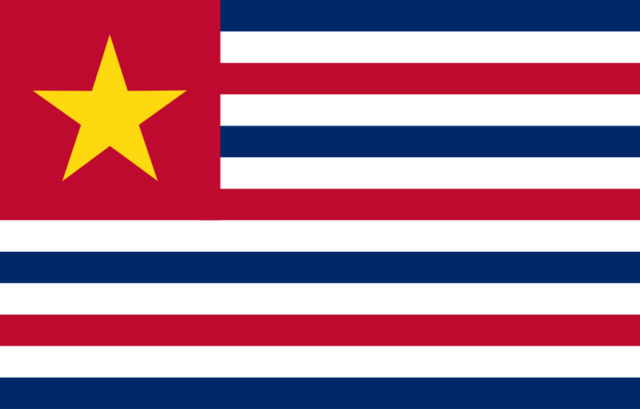
After Louisiana had announced their withdrawal, several prominent free blacks held a meeting for black men in response to Louisiana Governer Moore’s plea to the state for troops. Of the 2,000 black men who showed up, 75% of them signed up for the state’s militia, a significant proportion of the total free black population in the state.
Of course, as a product of the times, the most senior commanding officers were white, but many other officers were black. The LNG hungered for an opportunity to prove themselves but were given no opportunities.
After the First Battle of Bull Run, the men jumped at the chance to escort the Union prisoners. This request was denied, and the LNG had to sit around until new legislation stated that only whites could be in the state militia, officially disbanding the group.
Although they were reinstated, they would be dissolved again, serving about a year in total. General Lewis, who ordered the final disbanding recommended that the troops should hide their guns and uniforms so as not to cause trouble.
Not long after, New Orleans City fell to Union forces and came under the command of General Benjamin Butler. The Union forces held the massive City with only 15,000 troops. They led an aggressive political campaign and gained the support of the poor and disenfranchised masses.
This included reforming the LNG again, this time into three regiments. These were entirely separate regiments sharing the same name as the original, but at least 10% of the 1st Louisiana Native Guard became part of the new Union formed regiments.
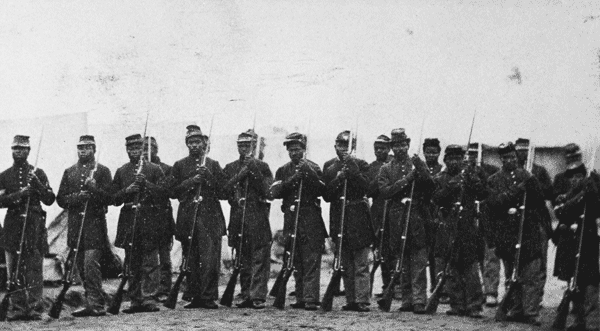
The regiments were vital to the security and stability of the City. On the one hand, they showed the free blacks they had support from the Union, even if said support was deeply prejudiced.
The regiments still had many black officers. Escaped slaves also provided a lot of manpower for the regiments, giving slaves throughout the South hope for a future if they could find a way to escape.
A second use for the regiments was to keep the elite under control. This was the same state that was so uneasy about blacks with guns they outlawed them from the militia. By arming three regiments with them, Butler sent a strong message to the people that things were changing. Butler was one of the more progressive leaders during the war but still did not trust black troops in actual combat roles.
During the massive Siege of Port Hudson in 1863, the regiments performed mainly labor work. This involved collecting wood, building fortifications and other earthworks and bridges and occasionally guard duty.
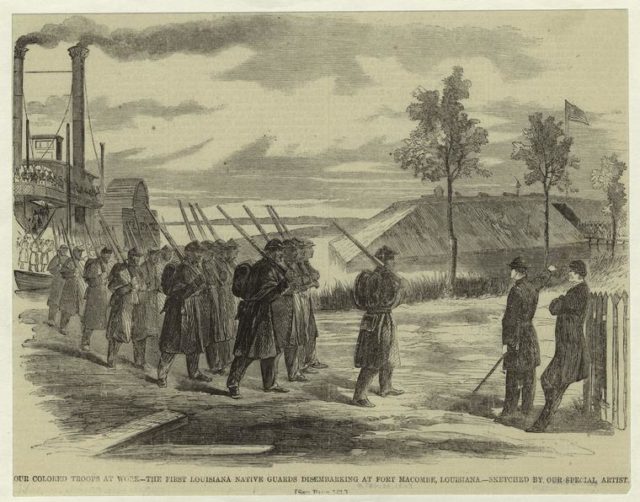
They would have their opportunity in the fighting, much to their surprise, when they were at work maintaining pontoon bridges and a nearby Union attack on a fort failed. General Dwight ordered the 1st and 3rd LNG to attack, probably hoping to force the defenders to spread their lines and stress their artillery.
The regiments were in a bad position, needing to cross a bridge before being able to attack. They were met with huge amounts of fire from multiple positions. They faced long stretches of perpendicular rifle crossfire, but they kept up the charge.
Andre Cailloux was known to have boldly led his men onwards until he was killed by gunfire. This combined with the mounting losses, forced the regiments to retreat. The attack ultimately had no realistic chance of success and the other Union assaults on the fort continued to be stopped for the rest of the day. Despite the losses, the LNG regiments proved they could be trusted to perform under enemy fire.
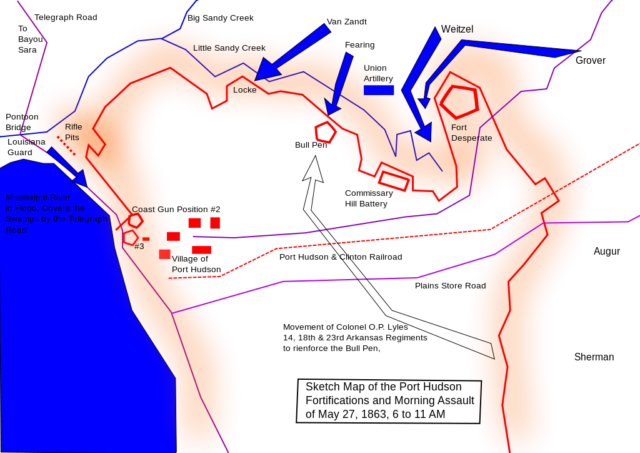
Andre Cailloux was given a hero’s funeral, and his exploits were widely celebrated. He was a former slave, married to a former slave, and was a noted patriot. He taught himself to read English and French, was an avid boxer and supporter of a school for orphaned black children. His fame was used to bring more blacks into the Union army. The LNG’s bravery as a unit and Cailloux’s story helped to change perceptions of black soldiers in America.
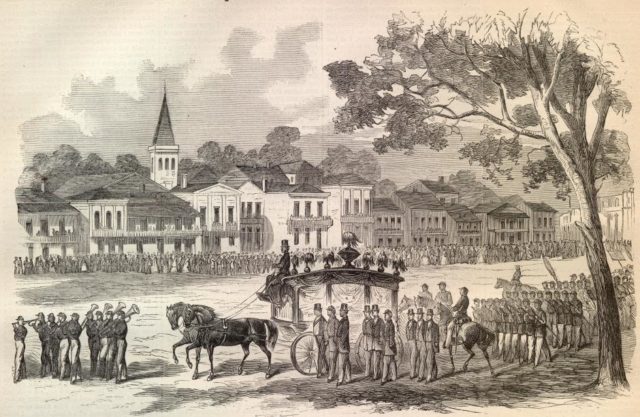
It is baffling to understand how it was assumed black troops were somehow cowardly or unreliable. This attitude continued throughout WWI and WWII.
In each conflict, there were multiple examples of black troops going above and beyond the call of duty. Many of the men fought with so much incredible bravery; they stood out even among the enemy.
After the charge of the LNG, public perception of black soldiers changed, but such change had to happen all over again as black troops of successive generations had to repeatedly prove their worth, often begging for combat roles just to get the opportunity.
